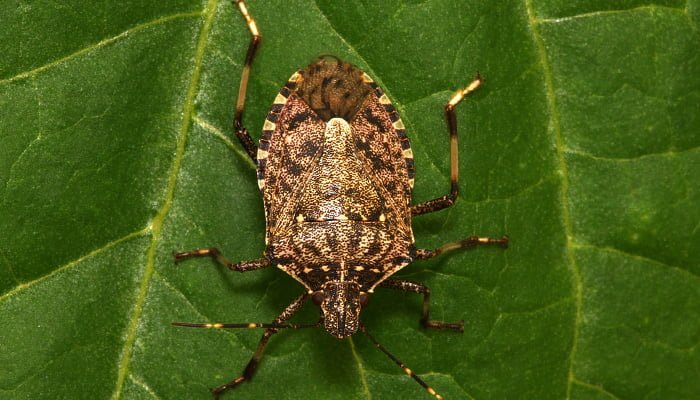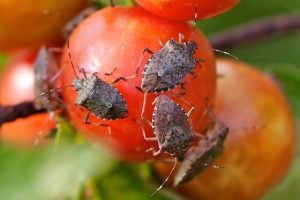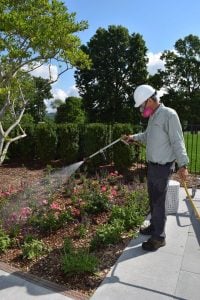The stink bug, classified as a nuisance pest, is originally from Asia. The brown marmorated stink bug is the one you are likely seeing all over your yard, in your trees, and possibly in your home. Mild winters and warm springs allow for additional generations to reproduce, which is likely the cause of their increased population. These stink bugs were found in NY in 2010, and since then, they’ve officially spread to 44 states.
How they got here:
- It is believed that they came over in a shipping crate from either China or Japan in the 1990’s when they were first spotted in Allentown, PA.
- Plants are the primary source of food for a stink bug.
- A stink bug feeds by sucking the sap from pods, buds, blossoms, and seeds.
- They are most commonly crop pests feeding on fruits, cabbage, cotton, beans, squash, melons, etc.
- Stink bugs also feed on shrubbery.
- If your residence has a garden, or a landscape rich with plants and flowers, you may see a higher population of stink bugs.
- A stink bug uses it’s needle-like stylet to pierce the fruit, vegetable, or plant, causing produce and plants to rot from the inside.
Life Cycle:
- They go through a simple metamorphosis including egg, nymph, and adult.
- A stink bug can lay up to 30 eggs on the underside of leaves in clumps.
- They take a couple of months to mature after the nymph stage.
Time of year:
- The stink bug reaches its peak population in late September to early October.
- Most importantly, you want to prevent these pests from getting into your home.
- You can do this by:
- Sealing off entry points
- Replacing and repairing damaged screens and other entry ways with small openings
- Reducing moisture sites
- Inspecting boxes or wood before bringing them into your home
- Maintaining landscape – Keep branches and shrubbery well-trimmed and maintained
- If spotted, use a vacuum to pick them up or flush them.
- Use an IPM (integrated pest management) approach to manage insects on your property.
- Use eco-friendly pest management applications (timing in very important).
We are sure that you have been seeing a large amount of stink bugs around your home, specifically the brown marmorated stink bug. It is important to begin managing them on your property and to take measures to prevent them from entering your home.
At Red Cedar, it is our goal to properly manage and maintain your entire property and its landscape. By formulating a comprehensive plant health care plan, and integrating IPM approaches for pest management, we can help to ensure that your plants are healthy and thriving. Contact Red Cedar today for your free consultation, and trust the professionals to properly manage your property!




